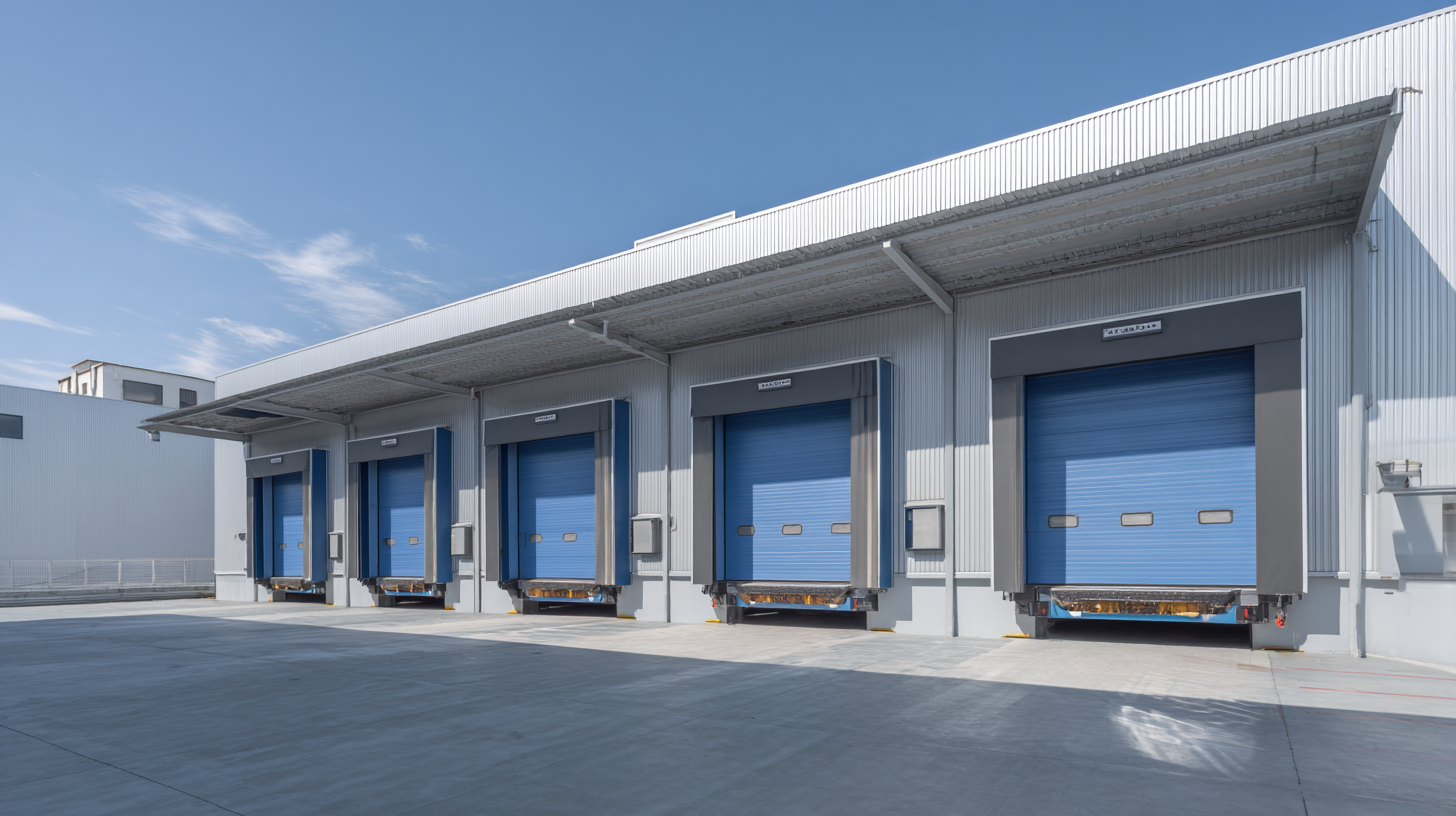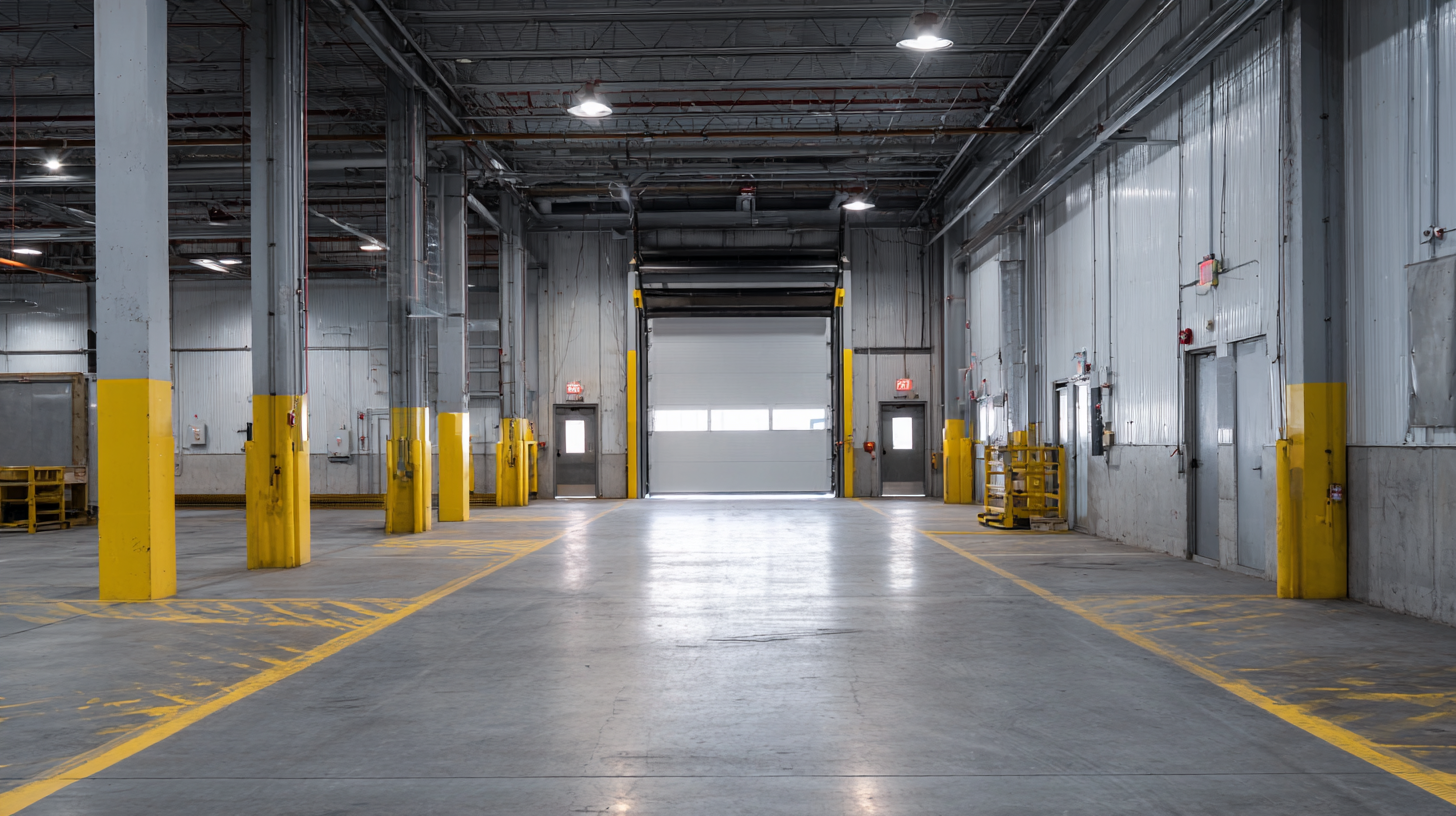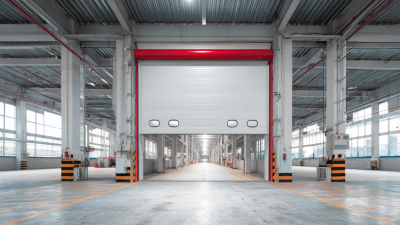 In the ever-evolving landscape of warehousing and logistics, maximizing efficiency is paramount for businesses seeking a competitive edge.
Industrial overhead doors have emerged as a critical component in optimizing warehouse operations.
According to a report by Research and Markets, the global overhead door market is projected to reach $33 billion by 2025, emphasizing the growing importance of these systems in various industries.
These doors not only facilitate faster loading and unloading processes but also enhance energy efficiency by providing better insulation compared to traditional loading docks.
A study from the Warehouse Education and Research Council (WERC) highlights that implementing advanced overhead door solutions can increase throughput by up to 20%, showcasing their potential impact on operational productivity.
As warehouses continue to adapt to the demands of e-commerce and just-in-time logistics, the role of industrial overhead doors in streamlining processes and
reducing operational bottlenecks becomes increasingly vital.
In the ever-evolving landscape of warehousing and logistics, maximizing efficiency is paramount for businesses seeking a competitive edge.
Industrial overhead doors have emerged as a critical component in optimizing warehouse operations.
According to a report by Research and Markets, the global overhead door market is projected to reach $33 billion by 2025, emphasizing the growing importance of these systems in various industries.
These doors not only facilitate faster loading and unloading processes but also enhance energy efficiency by providing better insulation compared to traditional loading docks.
A study from the Warehouse Education and Research Council (WERC) highlights that implementing advanced overhead door solutions can increase throughput by up to 20%, showcasing their potential impact on operational productivity.
As warehouses continue to adapt to the demands of e-commerce and just-in-time logistics, the role of industrial overhead doors in streamlining processes and
reducing operational bottlenecks becomes increasingly vital.
Industrial overhead doors play a pivotal role in the design and functionality of modern warehouses. According to a report by the Freedonia Group, the demand for industrial doors is projected to grow by 3.4% annually, indicating an increasing recognition of their importance in operational efficiency. These doors not only facilitate the swift movement of goods in and out of facilities but also enhance energy efficiency by providing better insulation and reducing heating and cooling costs.

Additionally, the design of industrial overhead doors has evolved to incorporate advanced technologies, such as automatic opening systems and sensors, which minimize manual handling and improve safety in fast-paced warehouse environments. Research conducted by Technavio highlights that automated industrial doors can increase warehouse productivity by up to 20%, allowing companies to process more shipments while reducing labor costs. The integration of these doors into warehouse design not only optimizes space but also contributes to a more streamlined workflow, making them an essential component of modern logistics solutions.
Advanced door technologies are revolutionizing warehouse operations by enhancing workflow efficiency. Research indicates that implementing automated industrial overhead doors can reduce time lost during loading and unloading processes by up to 25%. This significant time saving translates not only to faster turnaround times but also to improved labor productivity. Such efficiency is vital in a competitive market where every second counts towards meeting customer demands.
Tips: Consider integrating smart sensors with industrial doors to streamline opening and closing mechanisms. This integration can further minimize human error and optimize traffic flow within the warehouse. Additionally, adopting energy-efficient models helps reduce overhead costs and supports sustainable practices—essential in today's eco-conscious marketplace.
Furthermore, extensive studies have shown that warehouses that utilize advanced door technologies experience a 30% decrease in product damage rates, contributing to overall operational reliability. As safety and efficiency take precedence, it's clear that investing in these innovations enhances both workforce and material handling processes, positioning businesses for growth in an evolving industry landscape.
When it comes to choosing between manual and automatic overhead doors in warehouse operations, understanding the nuances of each option is crucial. Manual doors may appeal to those who prioritize cost-effectiveness and enjoy a hands-on approach to their operation. They often require less initial investment and can be ideal for facilities with lower traffic volume, where the added convenience of automation may not justify the expense. However, the physical effort and potential delays associated with manual doors can hinder efficiency, especially in fast-paced warehouse environments.
On the other hand, automatic overhead doors are increasingly becoming the preferred choice for modern warehouses due to their ability to maximize operational efficiency. With the global market projected to grow significantly, companies are recognizing the advantages of automated systems. These doors reduce the need for manual labor, enabling a smoother flow of goods and decreasing wait times for loading and unloading. Additionally, innovations in automatic door technology provide enhanced safety features, which are becoming pivotal as businesses place greater emphasis on employee well-being and accident prevention. Thus, while manual doors may still hold a place in some settings, the trend clearly leans toward automation in the quest for a more efficient and safe workflow.
| Feature | Manual Overhead Doors | Automatic Overhead Doors |
|---|---|---|
| Initial Cost | $1,500 - $3,000 | $3,000 - $7,000 |
| Installation Time | 1-2 hours | 3-5 hours |
| Labor Requirement | 2 workers | 1 worker |
| Opening Speed | 15-20 seconds | 5-10 seconds |
| Energy Efficiency | Low | High |
| Maintenance Frequency | Yearly | Bi-yearly |
The integration of smart features into industrial overhead doors is revolutionizing warehouse operations, enhancing both efficiency and safety. According to a report by MarketsandMarkets, the global smart door market is projected to grow from USD 2 billion in 2020 to USD 5 billion by 2025, indicating a substantial shift towards technology-driven solutions. Smart overhead doors equipped with sensors and IoT connectivity allow for real-time monitoring and remote control, enabling warehouse managers to optimize door operations according to traffic flow and workload demands.
Moreover, these sophisticated doors can significantly reduce operational costs. A study from the Warehouse Efficiency Report highlights that smart overhead doors can improve energy efficiency by up to 30% by ensuring doors are only open when necessary and automatically closing after use. This not only minimizes temperature loss in climate-controlled environments but also prolongs the lifespan of the door mechanisms. Consequently, integrating smart technology into overhead doors not only streamlines daily operations but also enhances overall productivity in warehouses by minimizing downtime and maximizing throughput.
Upgrading to high-quality industrial overhead doors can significantly reduce operational costs for warehouses. These doors are designed to improve insulation and energy efficiency, which can lead to lower heating and cooling bills. Additionally, the durability of these doors minimizes the need for frequent repairs or replacements, further saving on long-term expenditures. When warehouses operate efficiently, they can enhance productivity, streamline operations, and ultimately boost profit margins.

Tips for Selecting Industrial Overhead Doors:
1. Consider insulated models to optimize climate control, especially if your facility handles temperature-sensitive goods.
2. Look for doors with high resilience against wear and tear, as this will enhance lifespan and reduce maintenance needs.
3. Assess your specific workflow needs; choosing the right speed and operation type (manual vs. automatic) can greatly enhance efficiency.
Investing in high-quality overhead doors not only streamlines warehouse operations but also leads to meaningful cost savings. By prioritizing these enhancements, businesses can ensure a productive facility that remains competitive in today’s fast-paced market.







Since 1984, Thermostop has been a reputable manufacturer of Industrial Sectional Doors, Cold Storage Doors and Specialty Doors such as Impactable Breakaway doors, Acoustic Doors and Ballistic Doors.
Contact